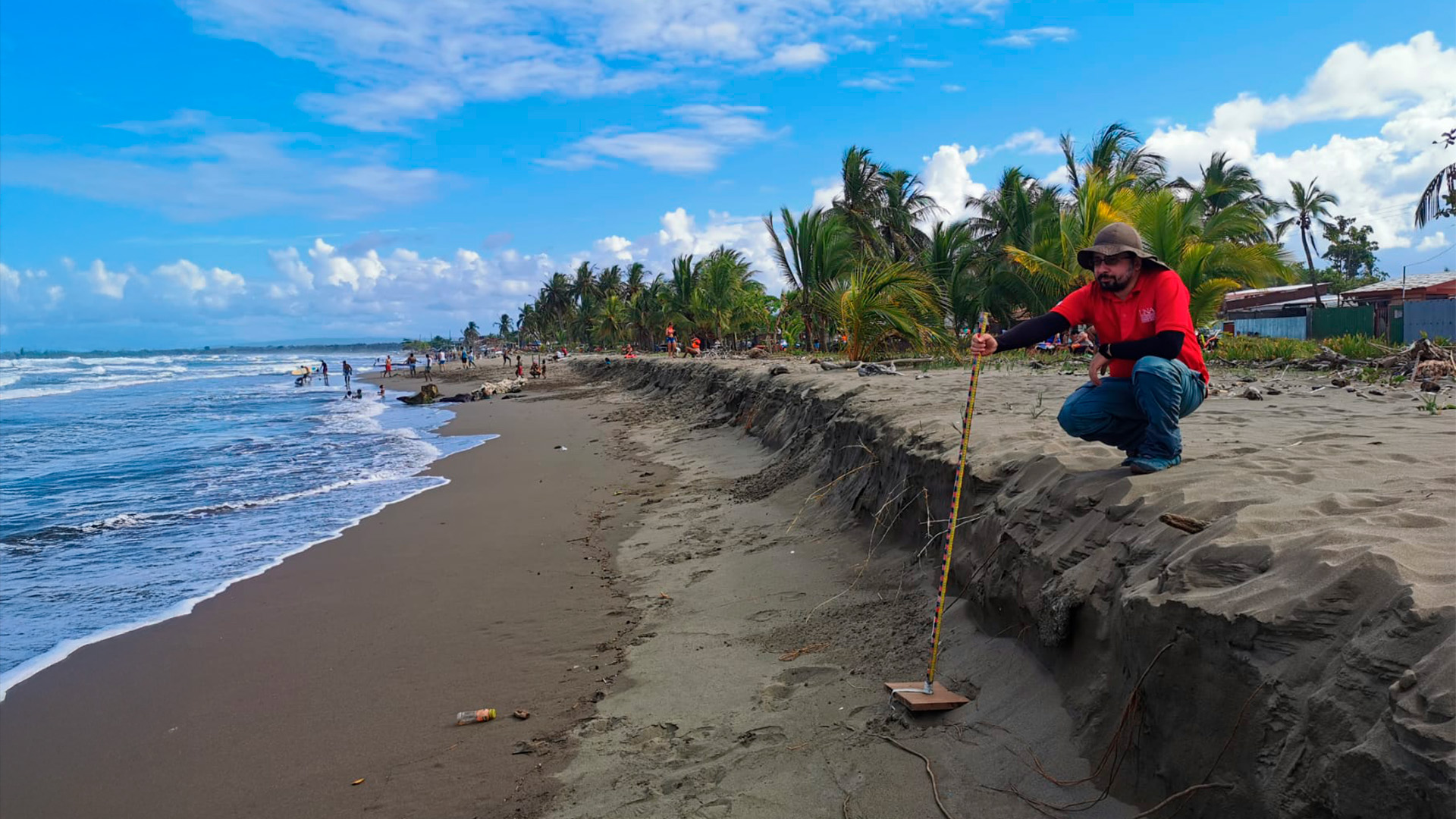Since its beginnings in 1973, the Faculty of Earth and Marine Sciences has been generating, socializing and transferring knowledge in the fields of human health, the environment, land use planning, geospatial information, agricultural and forestry production, conservation and management of natural resources, human health, hazard monitoring, climate variability, and environmental and occupational risk management.
It has three academic units and five specialized institutes:
- School of Geographical Sciences (ECG).
- School of Agricultural Sciences (ECA).
- School of Environmental Sciences (EDECA).
- Tropical Apiculture Research Center (CINAT).
- Regional Institute for the Study of Toxic Substances (IRET).
- International Institute for the Conservation and Management of Wildlife (ICOMVIS).
- Institute for Forestry Research and Services (INISEFOR).
- Volcanological and Seismological Observatory of Costa Rica (OVSICORI).
Photograph: INISEFOR measures soil samples to determine nutritional analysis.
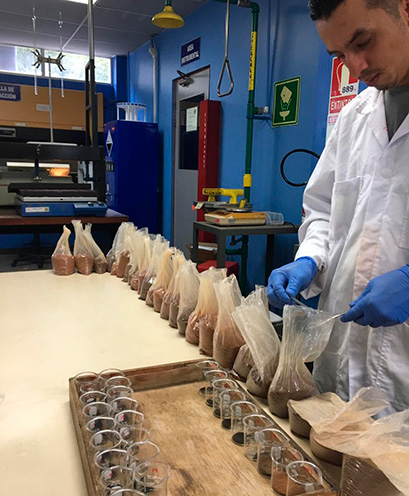
The degree courses offered in the Academic Units of this Faculty have a huge opportunity to influence development, from all the disciplines it articulates and their relationship with STEM profiles (Science, Technology, Engineering and Mathematics)”.
This Faculty develops and participates through different Modalities of Substantive Action framed in strategic areas such as:
- Risk management and climate variability: Seeks to identify, monitor and positively influence the management and prevention of climate-related risks, such as those derived from the country's volcanic and tectonic activity. It carries out activities aimed at reducing the vulnerability of various sectors such as agriculture, water resources, food security, health, environment and livelihoods.
- Environmental management and health: Contributes to local, regional and national sustainable development through the assessment of health risks and damage caused by environmental pollution and exposure to toxic substances, as well as the implementation of environmental diagnostic tools that facilitate the evaluation, monitoring and improvement of the environmental performance of systems, projects, works and activities.
- Sustainable production systems: Develops knowledge that increases the resilience of production systems against multiple risks related to climate change, updating models to make them more diversified, efficient and environmentally friendly, stimulating the generation of ecosystem services.
- Management and conservation of natural resources: Generates approaches to environmental sustainability, encouraging the integration of production, management, restoration, as well as conservation of ecosystems and their species, to maintain the long-term productivity of natural resources and the ecological processes on which they depend, restoring degraded ecosystems or diminished resources.
- Territory and environment: It studies the relationships established between economic activities and the physical, social and political components of the territory; the natural phenomena that occur on the earth's surface, human interactions with the environment, from a spatial perspective; as well as the strengthening of the processes of institutional and participatory management of the planning.
Researchers from OVSICORI-UNA collect data from the seismological stations of the Nicoya Geodynamic Monitoring Network project. As part of this project, the rupture zone of the Nicoya Earthquake of September 5, 2012, was successfully anticipated. This network continues to operate, monitoring post-seismic deformation and the start of a new seismic cycle in that segment of the subduction zone.
The scientist Marino Protti Quesada, during his second expedition to Antarctica, in 2016. On this occasion, the seismological network was uninstalled and the GNSS network was maintained. He also worked on the Ross Ice Shelf. In the background of the photograph, you can see the Transantarctic Mountains and behind them, the South Pole.
Earthquake Alert App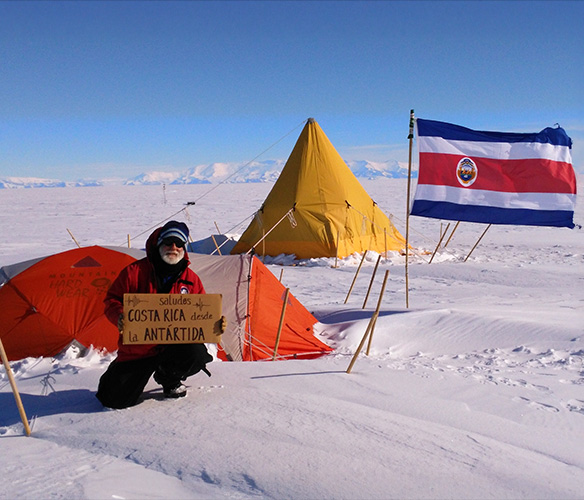
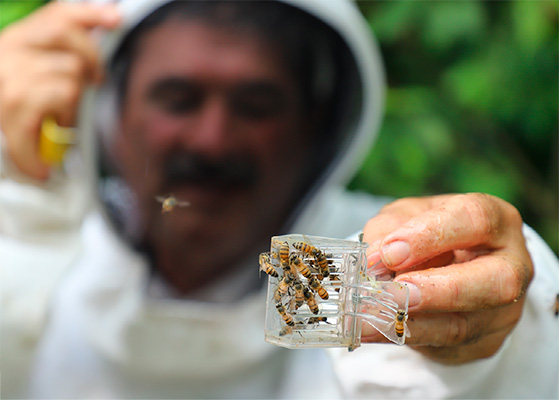
The Tropical Apiculture Research Center of the Universidad Nacional (CINAT-UNA) specializes in the study of bees and bee products.
Its research has been key to the conservation of these insects and the development and innovation of beekeeping and meliponiculture in the country.
Go to the websiteThe Institute of Forestry Research and Services, INISEFOR, provides advice on the management and felling of trees on farms, in urban areas and in recreational areas, as well as on the dragging, loading and transportation of timber for forestry use.
Dr. Ana Jaén Gómez, director of INISEFOR and coordinator of the Forestry Biotechnology Laboratory, observes the development of a in vitro gmelina plant.
Go to website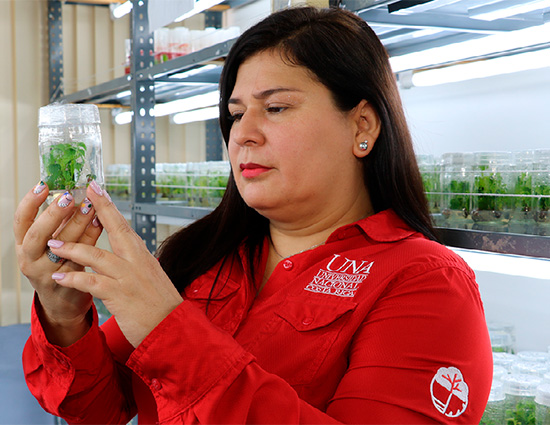
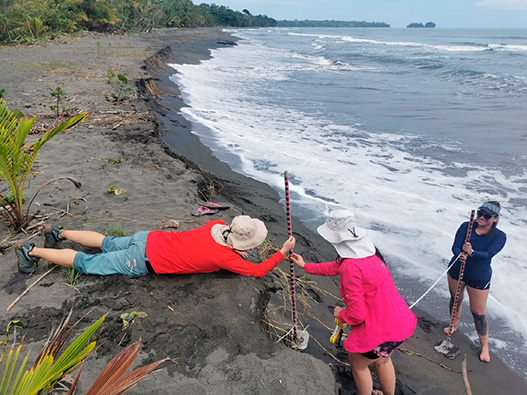
Researchers from the National System for Monitoring Coastal Erosion (SINAMEC) are monitoring beach erosion on the Caribbean coast of Costa Rica.
In the photo, topographer José Valverde Calderón and risk management geographer Daniela Campos, with the collaboration of the National Emergency Commission's area liaison officer, are surveying beach profiles using the Emery method at Gandoca beach, one of the locations where this process has been most severe in the last ten years.
Go to websiteThe Regional Institute for Toxic Substance Studies, IRET-UNA, generates data that is used by various organizations as a primary source of information on issues of exposure to toxic substances and their effects on the environment and on human health. Recently, it recommended an immediate ban on Fipronil.
Other examples of IRET's contribution are the preliminary study of the intestinal microbiomes of the otter (lontra longicaudis, predator) and the guapote fish (parachromis dovii, its prey), in relation to aquatic contamination by antibiotics in the Peñas Blancas River and its dissemination among public policy decision makers; the collection of otter stool samples in the Peñas Blancas River to determine their genetics, the presence of antimicrobial and viral resistance genes that may serve as indicators of the ecosystem quality of the area.
Go to website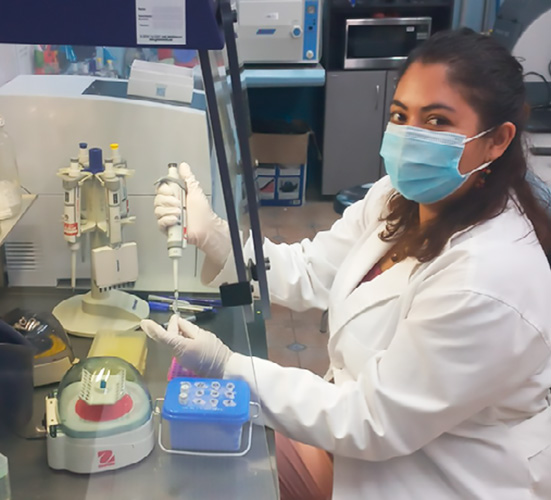
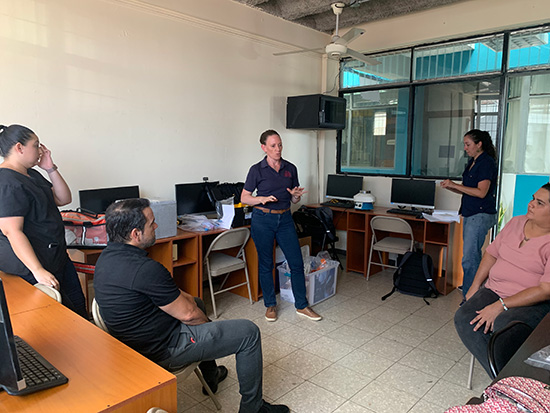
Researchers from the CURE-IRET, UNA team visit the cantons of Cañas and Bagaces to carry out an initial pilot plan for the collection and custody of samples in the field, following the protocol established by the CURE Consortium for the Study of Chronic Kidney Disease of Non-Traditional Origin.
Dr. Jennifer Crowe, as principal investigator of UNA-SALTRA-CURE, explains to the HIDROCEC work team and the local laboratory which biological samples will be taken. Blood samples are taken from volunteers who are not candidates for the study.
Go to the websiteThe School of Agricultural Sciences (ECA) offers the following postgraduate courses:
- Master's in Organic Agriculture
- Master's in Sustainable Community Development
- Master's in Rural Development
- Master's in Food and Nutritional Security Management
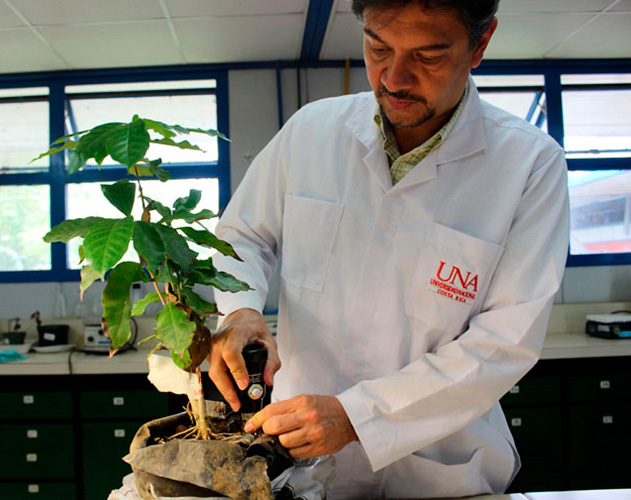
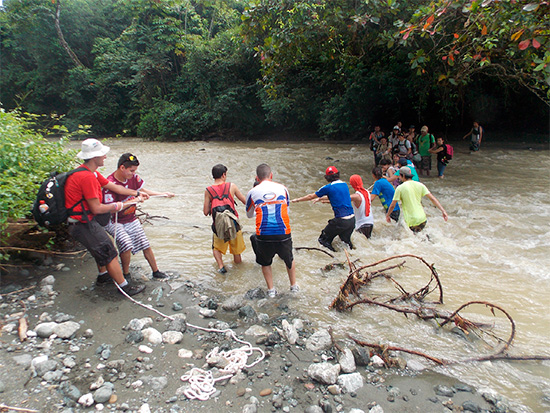
The Universidad Nacional has an Institutional Commission for Emergency Preparedness and Response which, among other activities, trains members of the university community to strengthen their ability to assume responsibility in emergency situations.
It also coordinates with the National Emergency Commission to deal with eventualities at the national level, whether due to inclement weather or earthquakes, tsunamis.
For more information, you can follow these links:


